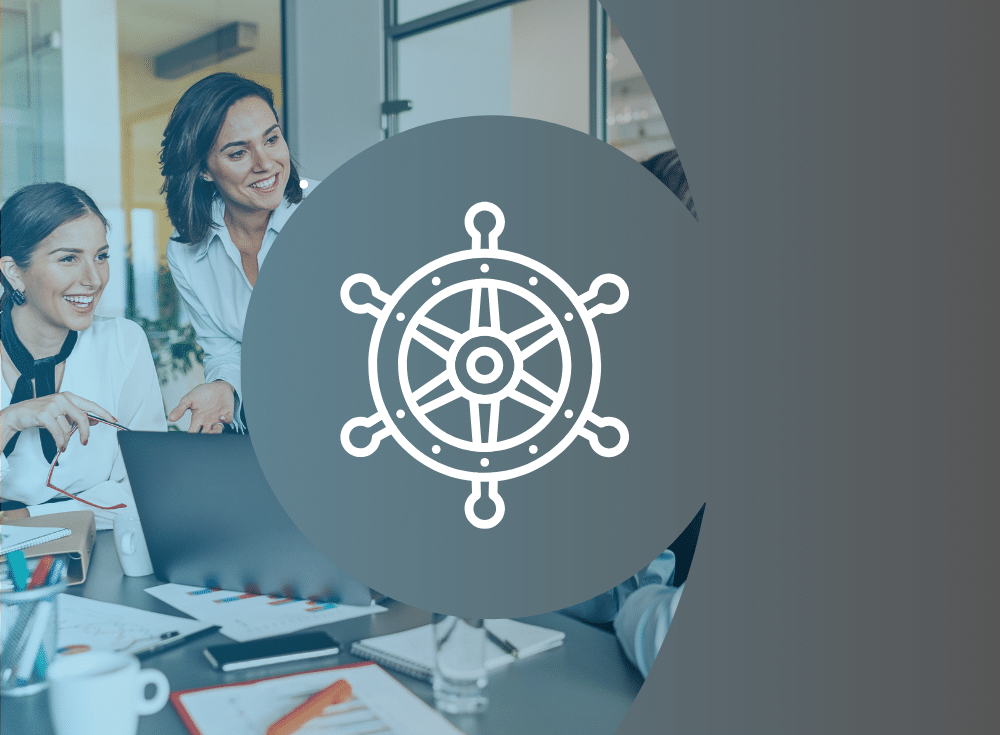Kubernetes at the core
Cloud computing is an essential part of any organization’s strategic planning. The technology is synonymous with components that make up cloud native solutions, such as Kubernetes, containers, immutability, orchestration, and auto-scaling infrastructure.
Kubernetes is at the core of cloud native computing platforms, so let’s take a look at this crucial technology that Google officially launched in 2014 and how it’s reshaped how engineering teams approach development and observability.
What is Kubernetes and how does it benefit observability?
In simple terms, Kubernetes (also called K8s because of the number of letters between “K” and “s”) is an open-source platform that is used to orchestrate Linux containers. Containers, software that can share operating systems without virtual machines, let users package and isolate applications for a production environment.
Once engineers configure their desired infrastructure state, Kubernetes then uses automation to sync said state to its platform. Though engineers will manage Kubernetes nodes, pods, and associated containers, the engineers do not make changes to their original infrastructure configuration. Organizations can run Kubernetes with containers on bare metal, virtual machines, public cloud, private cloud, and hybrid cloud.
IT teams use Kubernetes for container deployment, scaling and optimization, and developing cloud native applications with Kubernetes patterns. Patterns allow engineers to reuse Kubernetes observability architectures to address common issues that might occur within a container environment. There are foundational, behavioral, structural, configuration, and advanced patterns, so engineers can support multiple system components and workflows.
The Kubernetes platform’s main components are:
- Control plane: The origin of all tasks, the control plane is the processes that control Kubernetes nodes.
- Node: Machines that perform assigned control pane tasks.
- Pod: A group of containers distributed to a singular node. The containers within this pod share an IP address, IPC, hostname, and resources.
- Kubelet: A service that runs on nodes to check that the right containers are up and online.
- Kubectl: Command-line interface configuration tool for Kubernetes.
What are some challenges of Kubernetes observability?
New platform adoption always involves planning and testing out tools before production. Because Kubernetes observability often spans multiple parts of an organization’s infrastructure, it’s helpful to have an expert with domain knowledge as part of the implementation process.
For companies that don’t have internal resources, it may be helpful to work with a third-party service provider to ensure a smooth implementation and train any internal staff on how to run a Kubernetes deployment.
During Kubernetes adoption, engineers may run into issues with knowledge gaps, load balancing, monitoring complexity, and security. Because Kubernetes is an open-source project, there might be a learning curve on how to maintain and implement specific features and processes.
It also might take IT teams a bit to figure out how to effectively scale containers or load balance applications. Every organization has unique application needs and it will take time to find the right amount of virtualized resources to effectively run containerized applications.
Adding more containers and management tools also means there’s more infrastructure to monitor. This means that IT teams might need additional monitoring or observability tools to their technology stack to track how their Kubernetes deployments are running and set up new alert workflows.
Finally, organizations must also consider security. Whenever an IT team introduces a new platform into their infrastructure, it can increase the number of access points and widen the potential attack surface. Engineers must consider how they can regularly keep Kubernetes secure and what the security patching and management process might look like.
Kubernetes vs. Docker
Some might be curious about the connection between Kubernetes and Docker. Kubernetes is a container orchestration platform and Docker is a container management software.
This means that an organization could use Docker to create containers and use Kubernetes to manage the container instances. Engineers can also think of Kubernetes as the operating system and Docker as the apps that run on the operating system.
Whitepaper:
How Kubernetes Observability Improves Engineering Productivity and Controls Costs
Implementing Kubernetes observability in organizations
Kubernetes lets engineers run, schedule, and monitor containers across cloud infrastructure. Kubernetes might also be used to tame data-intensive workloads, detect service discovery, and extend platform as a service (PaaS) options.
Alongside automation capabilities, Kubernetes’ observability features help engineers with:
- Deployment: Create, migrate and remove containers.
- Monitoring: Keep an eye on container health, reset containers, and delete unused containers.
- Load balancing: Distribute data traffic across container instances.
- Optimization: Discover available nodes and which containers require resources.
- Storage: Store multiple storage types for container data regardless of location.
Additionally, Kubernetes has features to manage SSH keys, tokens, passwords, and potentially sensitive information. The platform can also bring on-premises workloads into the cloud; support serverless workloads; streamline multi-cloud management; and maintain edge computing deployments.
How does Chronosphere use Kubernetes observability?
As a cloud native platform, Kubernetes is a part of how Chronosphere collects data for more effective observability. Together, these platforms gain data about any active clusters, pods, or nodes within an organization’s infrastructure through the Chronosphere Collector. Engineers can run the Collector as a DaemonSet, sidecar, or Kubernetes deployment.
To get data, Chronosphere uses Kubernetes observability and Prometheus service monitors to send any appropriate data to a processing layer. This software layer then notes which containers and components require data collection and deploys a scrape job.
After the scrape job collects all available metrics from an organization’s containers, the data goes to Chronosphere’s backend through the metrics ingester. This then allows engineers to run a query and set alerts based on Kubernetes cluster metrics.
Chronosphere support for GKE
Chronosphere also supports Google Kubernetes Engine Autopilot (GKE), a service that reduces the need for manual cluster infrastructure management. When engineers are able to reduce the amount of time spent provisioning and managing nodes and node pods, they can focus attention on projects that benefit the overall organization – and ensure their infrastructure is as optimized as possible.
The integration of GKE Autopilot into Chronosphere means that IT teams can reduce Kubernetes management complexity and build out an observability workflow that ensures engineers will never miss critical alerts.
Overall, Kubernetes observability provides organizations a robust platform to manage their containers within cloud native infrastructure. With GKE’s integration into Chronosphere, engineers can be confident that they have all the necessary data and insight to effectively oversee their Kubernetes deployment.
Kubernetes Observability FAQs
What is Kubernetes?
Containers bundle applications with system tools, libraries and configuration files to create a modular package that runs the same anywhere, and Kubernetes is a way to help orchestrate containerized applications. Kubernetes is a “portable, extensible, open source platform for managing containerized workloads and services.” It is backed by the CNCF.
What is Kubernetes vs. Prometheus?
Kubernetes is an open-source system for automating deployment, scaling, and management of containerized applications. It groups containers into logical units for easy management and discovery. Prometheus is the modern standard monitoring technique for monitoring Kubernetes observability clusters.
Why do people call Kubernetes “k8s”?
K8s is a numeronym, or number-based abbreviation, for Kubernetes. There are 8 letters between the “K” and the “s” of Kubernetes (yes, count them!)… so, K8s.
What are Kubernetes pods?
Kubernetes pods are the smallest deployable units of computing that you can create and manage in Kubernetes.
What are Kubernetes clusters?
A cluster is a grouping of nodes that run containerized applications, or a collection of linked node machines.





